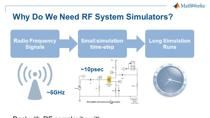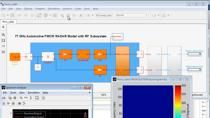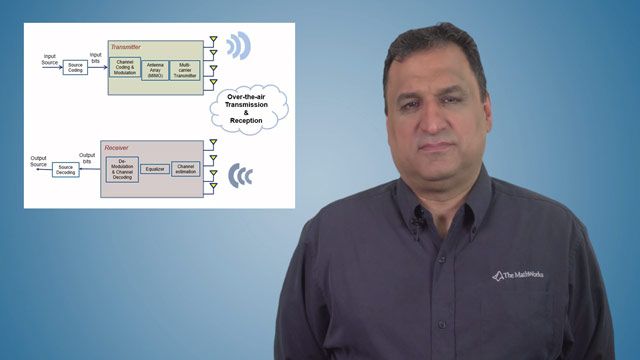Three Steps to Simulate RF Transceivers in MATLAB
Learn three simple steps to design RF transceivers, integrate them in your existing MATLAB code, and perform system-level simulation. With this new approach you can directly integrate RF models in MATLAB for the simulation of digital communication (5G, WLAN, etc.) or radar systems.
Practical examples will demonstrate how to perform RF budget analysis and estimate the impact of S-parameters, non-linearity, and noise. You will see how to customize your RF model to include effects such as impedance mismatches, saturation, and finite isolation.
You can add analog / digital data converters and control logic to the RF transceiver and develop innovative architectures. With this new methodology, you can simulate the entire system in MATLAB together with digital signal processing algorithms. Finally, you will learn how to use multi-carrier Circuit Envelope simulation for coexistence and interferer analysis.
Highlights
- Designing RF transceivers at the system-level
- Using S-parameter, noise, and non-linearity data for RF budget analysis
- Integrating RF system simulation in your MATLAB code
- Using multi-carrier simulation for coexistence and interferer analysis
About the Presenter
Dr. Giorgia Zucchelli is the product marketing manager for RF and mixed-signal at MathWorks. Before joining MathWorks in 2009 as an application engineer focusing on signal processing and communications systems with specialization in analog simulation, Giorgia worked for two years at NXP Semiconductors on mixed-signal verification methodologies. Before then, she worked for Philips Research, where she contributed to the development of system-level models for innovative telecommunication systems. Giorgia has a master’s degree in electronic engineering and a doctorate in electronic engineering for telecommunications from the University of Bologna. Her thesis dealt with modeling high-frequency RF devices.
Recorded: 30 Apr 2021




